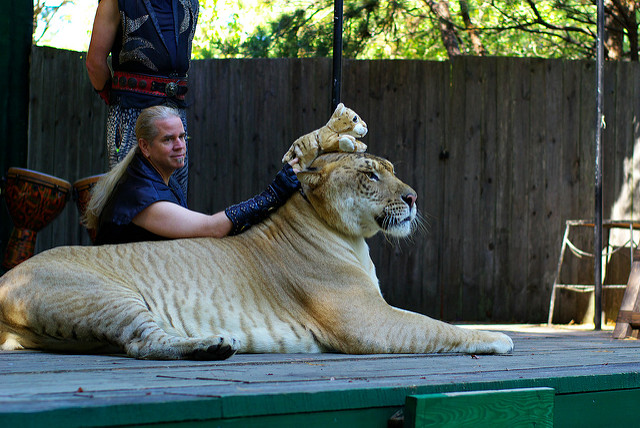
Photo by Jassen via Flickr
We already know that first-hand observation and interaction of wild animals is a major tourist draw, and not just in foreign countries. Tourists can pay to pet, take pictures with, and ride animals at their local zoo, animal park, or hotel -- right here in the U.S.
World Animal Protection has estimated that around 550,000 wild animals are suffering at the hands of irresponsible tourist attractions around the world, and that approximately 110 million people visit wildlife tourist attractions each year, unaware of the dubious actions going on behind the curtain. If you are thinking about participating in or visiting an animal attraction, be sure that you know -- and are comfortable with -- what your patronage (aka money) is supporting.
Here's a look behind the scenes of some of the world's favorite animal attractions.
Editor's Note: Most of what we found is not pretty. Some facilities adopt more animal-friendly practices than others, but be sure to do your research.
1. Riding Elephants
Photo by jaoquin uy via Flickr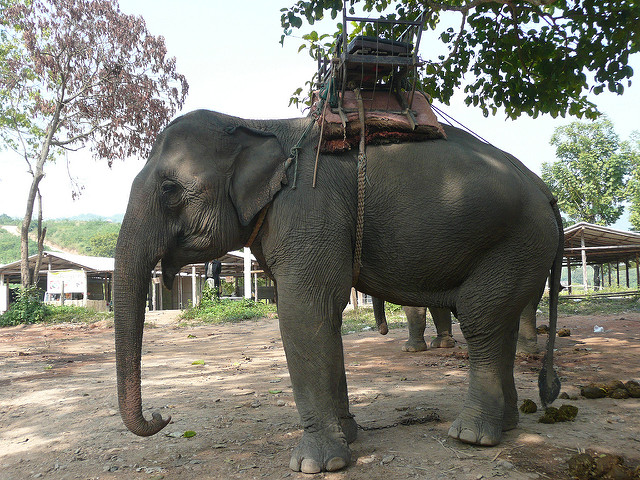
Riding around on the back of the world’s largest mammal certainly makes for a cheap (or sometimes, actually, rather expensive) thrill. But make no mistake — this is not a natural behavior for the elephant. In order to become ride-ready, elephants must be trained to follow commands and accept riders. Cindy Stadler, a conversation coordinator in South Africa‘s Eastern Cape, reminds us that, “No elephant can be trained to be obedient to its master’s commands without being broken.”
The “breaking” process almost always involves short chains and cramped spaces, as well as mental and physical abuse in some cases. Training starts young, and elephants are often taken from their mothers as infants. World Animal Protection estimates that nearly 75 percent of elephants used for tourism entertainment have been taken from the wild, and that nearly a quarter of the world’s elephant population is now in captivity. It’s estimated that captive elephants live about 20 years, nearly half as long as their wild counterparts.
2. Visiting Tiger Temples
Photo by S B via Fickr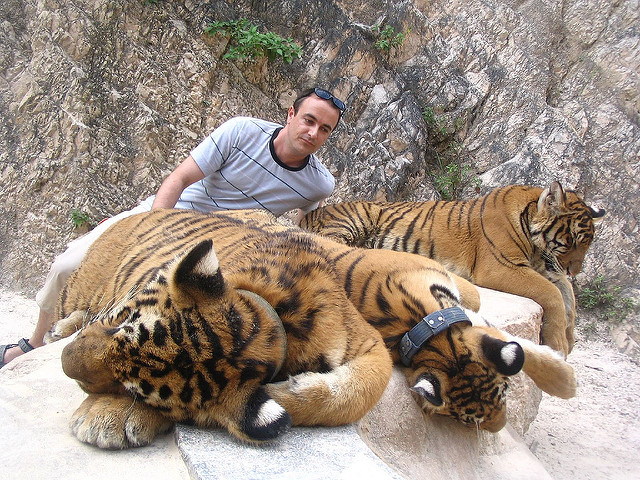
Tiger temples are marketed as magical and spiritual places where tigers and monks appear to live in zen-like harmony, and where tourists can pay for a pet, picture, and piece of the action. However the tigers used in these attractions are rarely (if ever) treated well, and are often illegally bred and then taken from their mothers at an extremely young age for a life in show business. Photo-op tigers are often kept on short leashes or chains, and are most likely sedated to remain docile enough for human interaction, while those cute baby tigers are overstimulated by eager tourists who all want a chance at feeding, holding, and playing with them. However, this “showtime” is likely the most space a temple tiger will experience as they are often kept in concrete cells or small cages behind the scenes.
As for the argument that your admission is going to a good cause (temples often advertise this) — some facilities have been accused of illegally breeding animals for tourism, selling animal parts, and participating in animal trade. And some have been busted, like the infamous monk-run Tiger Temple in Thailand, where tourists flocked and authorities found several dead tiger cubs and a shocking number of tiger parts on the premises, tiger pelts, 40 frozen tiger cubs, and a handful of dead cubs preserved in jars.
3. Sea Turtle Hatchings at Hotels
Photo by Jan Smith via Flickr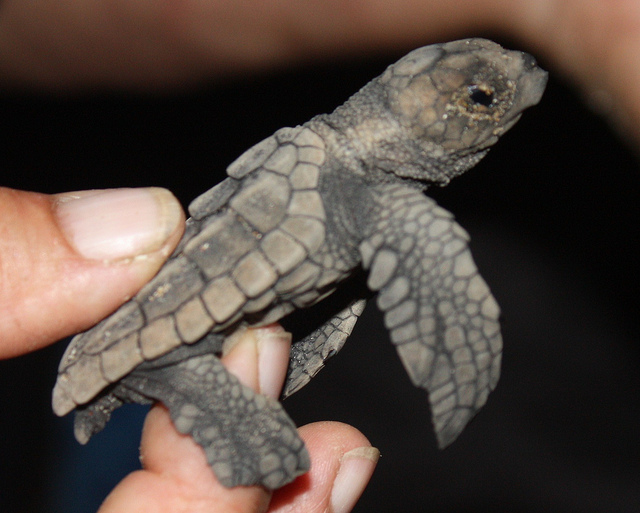
Baby sea turtles are already working against the odds to survive from the moment they crack out of their shell. According to conserveturtles.org, only about 10 percent of hatchlings ever make it to adulthood. Since confused newborns rely on the glistening light of the moon to find the ocean, having a bunch of tourists present snapping selfies with flash — or even picking up the fledgling babies for photos — only confuses them further, causing them to run in several different (and wrong) directions. Besides the fact that only professional conservationists should be handling the babes (with protective gloves), it’s also common for excited tourists to crush the fast-moving turtles underfoot while trying to observe or take photos. While it truly is a magnificent experience, unnecessary human presence could be doing more harm than good.
4. Swimming with Dolphins and Dolphin Shows
Photo by Matthew Baya via Flickr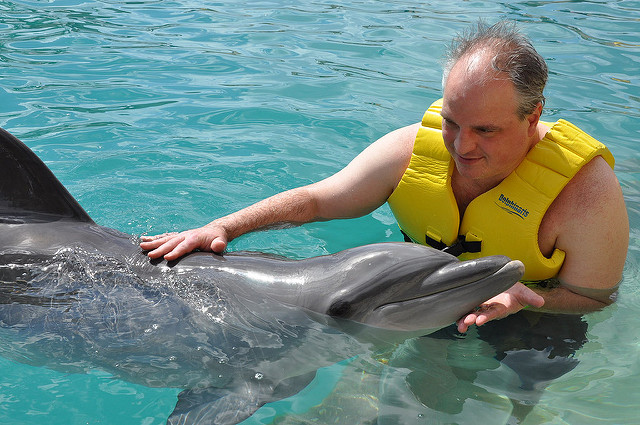
Swimming with dolphins may sound like an aquatic dream come true for you and your family. Though TV and marine attractions may have altered our perception over time, it’s important to remember that dolphins are actually wild animals, not performers. Chances are, your show or “swim with” dolphin was captured from the ocean or bred specifically for entertainment purposes, and has gone through rigorous training to jump, scoot, juggle, and swim on cue. Captivity also deprives these magnificent marine mammals of their natural sociability instincts thanks to forced grouping and living conditions. While some argue that aquarium and entertainment programs have conservation at their heart, Born Free states that many of the show animal species are not actually at risk of being endangered. Since dolphins are such beloved marine creatures already, it’s also been argued that live shows and swim-with attractions are unnecessary for the conservation engagement of the species.
Former dolphin trainer-turned-anti-captivity activist Gail Woon told the Huffington Post about the corruption and cruelty she witnessed — including abuse, illegal trade, and mass ocean collection for “swim with” dolphins — while working as a dolphin trainer in the Bahamas. So, it may seems like all beach balls, flips, and squeaks on deck, but behind the scenes it can be deadly, dangerous, and just downright detrimental for the actual dolphins — even if the facility has the best of intentions.
5. Taking Pictures with Captive Wild Animals
Photo by Tambako the Jaguar via Flickr
Similar to the tiger temples in Thailand, where tourists snap photos of themselves with the “wild” cats, any photo-op with a captive wild animal can seem like a great trip momento — but it is rarely worth the price the animal pays. Regardless if the animal you’re taking a selfie with is a white tiger or a friendly llama, any animal hit with a constant barrage of touchy tourists is bound to feel distress.
If you’ve been to Asia, you’ve likely seen a cute macaque shooting hoops, sitting on a picnic table, or chained up in a bar. While larger, more dangerous animals are often drugged, these smaller animals are sometimes left perpetually chained up on a short leash and physically abused — we’ve seen it. Their terror and distress is obvious, and some have even sported open wounds or appear to have untreated medical issues. Remember, your photo is just one of thousands that will be taken in a given week and every snap taken justifies the animal’s captive existence to the owners.
6. Volunteering at Lion Parks
Photo via Lion Park Volunteers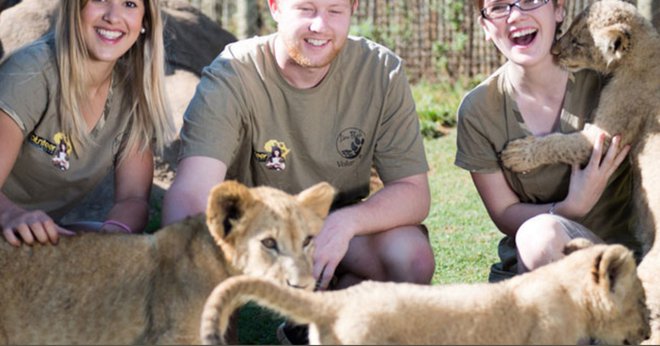
Unfortunately, many shady operations cloak themselves as sanctuaries, rehab projects, or animal-interest programs when, in fact, they are purely for-profit tourist traps with little interest in animal welfare. Some programs will outright lie to quench the concerns of volunteers, conservationist Cindy Stadler warns. “Sanctuaries [offering cub petting] usually advertise that the mother abandoned [the cubs] at birth”, says Stadler. “The cubs then get raised by volunteers, who pay thousands of dollars to do that. The cubs are pet daily by visitors. Ask yourself ‘Why is the sign up all year round advertising cub petting? Does the mother always leave her cubs?” (The answer is no.) Often times, when a cub grows beyond its cute stage it will be raised, trained, and broken to participate in lion walks — or even sold into the canned hunting industry or to breeding camps to continue the cycle. This is because they cannot be released into the wild after so much human contact and they have never learned to survive or hunt on their own. According to Stadler, there are currently more lions in captivity (roughly 8,000) than in the South African wild.
7. Snake Charming, Kissing, Eating, and Drinking
Photo by Amiya via Flickr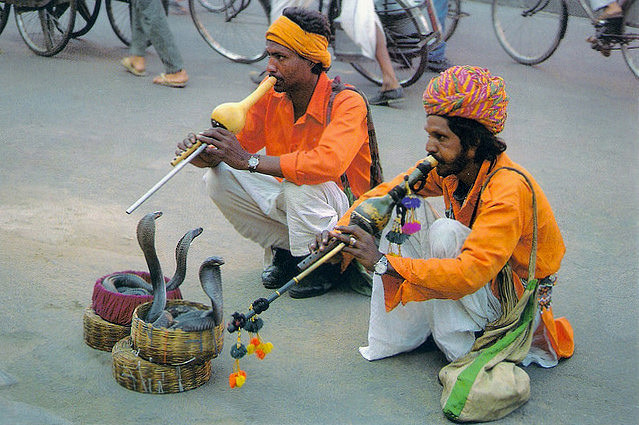
A visit to the Le Mat Snake Village just outside of Hanoi, isn’t for the faint of heart. Here, tourists can watch a live cobra be killed in front of them, eat its still-beating heart, and drink its still-warm blood. There are also several restaurants on-site that can cook up the meat into delicacy dishes. This may make you feel like a boss, but the truth is that, as Scott Roberton from the Wildlife Conservation Society was quoted, “Tourists kid themselves into believing that they’re trying a local delicacy, when all they’re really doing is trying to satisfy their own bravado.”
Another seemingly-daring snake charade available to tourists in Asia is kissing or charming cobras. While it may seem like a daredevil, risky thing to do, there’s usually no real threat to getting bitten for you or the snake charmer. Why? Because the snakes mouths are often sewn or glued shut, which still allows their tongues to flicker outside but doesn’t allow them to eat. Maybe it’s just us, but it doesn’t seem very boss if you’re contributing to cruelty like that.
8. Visiting Animal Parks and Zoos
Photo via Ingrid N. Visser, PhD via SeaWorldofHurt.com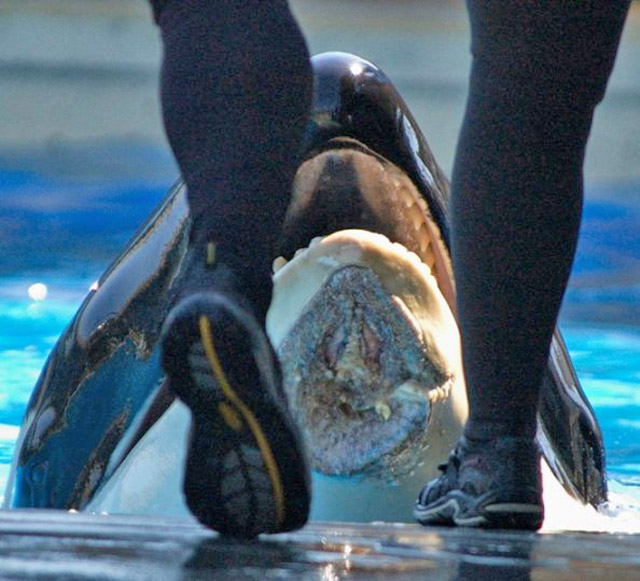
Accredited zoos and animal parks may have been viewed positively in the past, both as educational tools for humans and as a crutch for survival to some animals, but lately it’s been hard to ignore the media, movies like “Blackfish” and “Blood Lion,” and the resultant public outrage. Aimed at highlighting the controversial captivity of animals for human entertainment, both films have stirred intense ethical debates on the sourcing, treatment, effects, and relevance of the animal tourism industry.
Gabe Harris, a zoological professional who is also a South African-trained Level 1 Field Ranger, urges the public to check into facts as to not overlook all the positive things some of the AZA accredited parks are achieving, especially through their ability to educate visitors and facilitate personal experiences with the animals that they would otherwise not have access to. “To quote famous naturalist, David Attenborough,” says Harris, “‘No one will protect what they don’t care about, and no one will care about what they have never experienced’.”
However, Harris — who is privy to what’s happening behind the curtain at one of the U.S.’s top animal parks — recognizes and appreciates the public’s concern, and attests that, “just as there are bad and good charities out there, there are certainly frauds who aren’t truly focused on animal welfare, as well as great animal parks that do amazing work, locally and abroad — with animal welfare as their top priority.” Interestingly, the parents of the SeaWorld trainer, Dawn Brancheau (who was killed by the whale featured in “Blackfish”), echo Harris’ point. They have denounced the documentary, stating that their Dawn “believed in the ethical treatment of animals. [She] would not have remained a trainer at SeaWorld for 15 years if she felt that the whales were not well cared for.”
From her post on a game reserve in Africa, Stadler says, “I know that some people are okay with zoos, but I think they are animal jail.”
Related Stories:
- Go Wild! 12 Hotels Where You Can See Amazing Wildlife
- The World’s Most Controversial Tourism Practices
- 5 Wildlife Adventures You Have To Take Before You Die
- 10 Best National Parks in the U.S.
All products are independently selected by our writers and editors. If you buy something through our links, Oyster may earn an affiliate commission.



